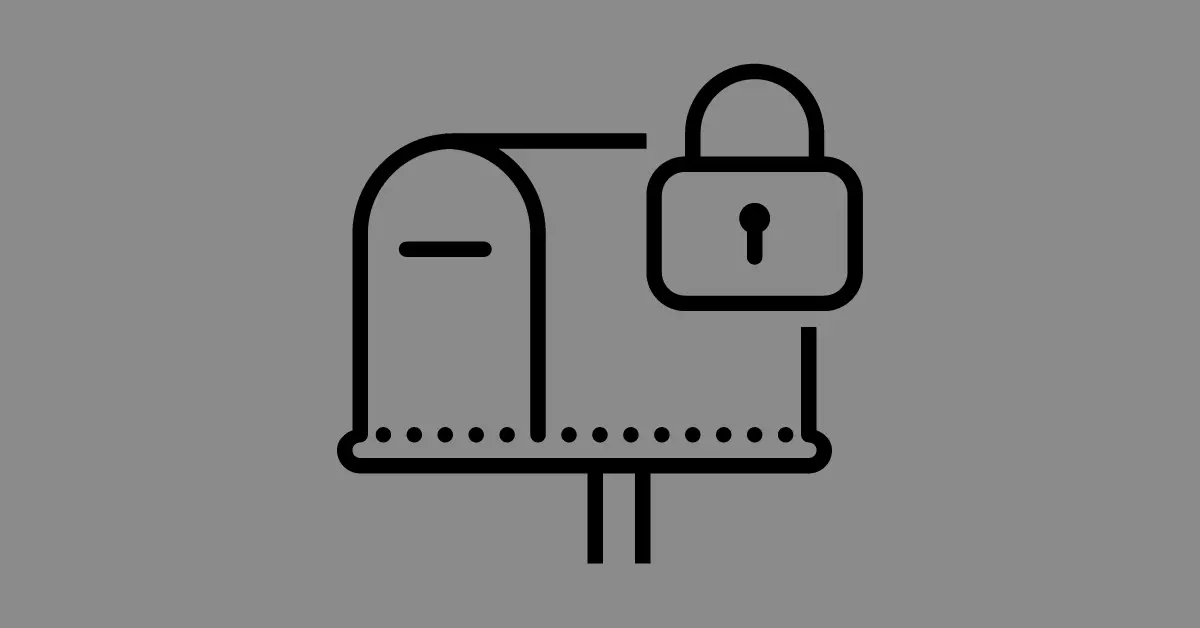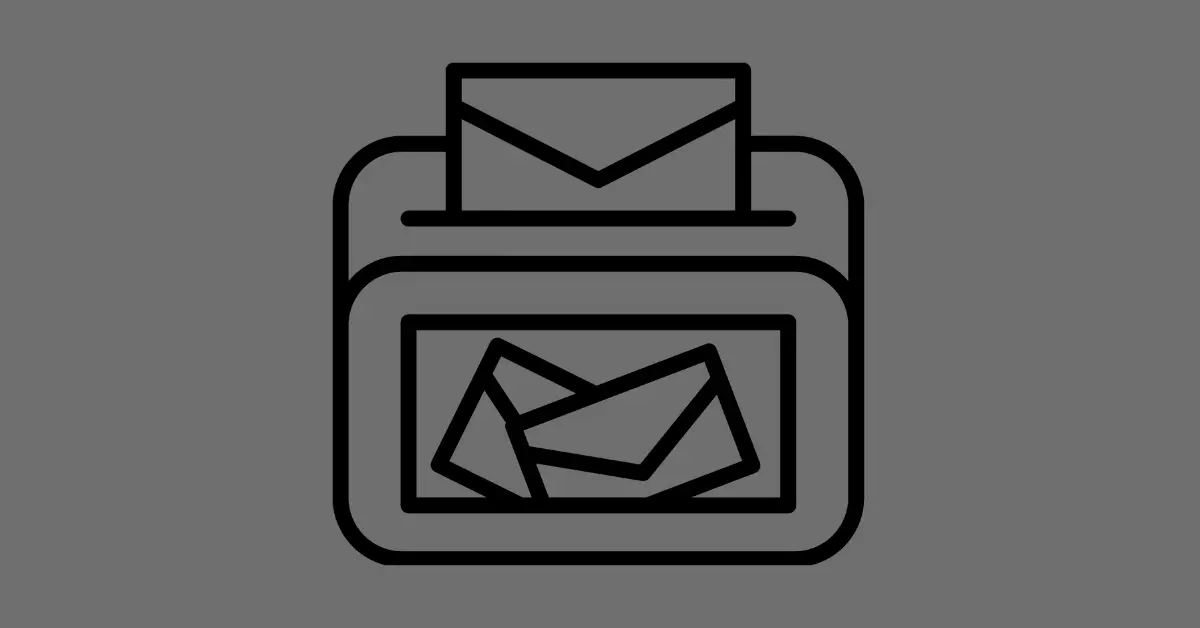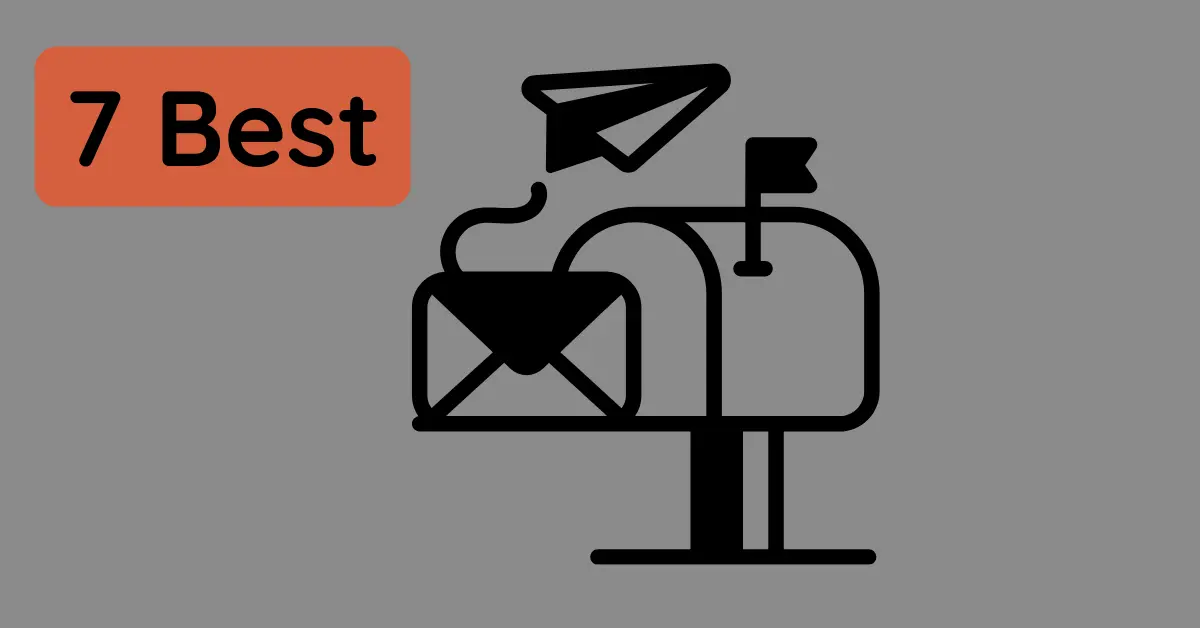While exploring this guide, you’ll learn the several mediums you can use to deal with your mail while abroad. Moreover, you’ll understand why you should still worry about handling physical mail and how to prepare yourself for handling mail while overseas.
I’ve been overseas for over 5 years and have had to also deal with my mail. If you’re considering moving abroad, you’ll also want to know ways to deal with your mail. I’ve condensed all your options to help you make a decision.
Your 4 Options for Handling Mail as an Expat
Some of the best ways to deal with mail as an expat include:
- Virtual mailbox providers: best overall
- Forward your mail: best for saving money
- Have it sent abroad: best for saving time
- Post restante: best for security
You don’t have too many options for handling mail as an expatriate. However, the available options are secure enough to ensure that you have peace of mind and protect your data.
1. Virtual Mailbox Providers
Best for: RVers, digital nomads, expatriates, those immigrating to other countries, and overseas business owners
Virtual mail forwarding companies give you a physical mailing address to receive mailing items. These include packages, letters, and other documents. From there, the providers will scan the exterior of the mailing item and send you the photo digitally.
Afterward, determine whether you want them to take a picture of the mailing item’s contents, forward the package to your overseas home, store your mail, or dispose of it.
Virtual mailbox providers will usually offer secure shredding regarding mail disposal—some charge extra for this perk.
Speaking of security. Your mail would go to a secure facility or a Commercial Mail Receiving Agency (CRMA). These receivers will have safeguards in place to protect your mail from thieves. For instance, they’ll install security cameras and alarm systems.
To use virtual mailbox services, you must pay a subscription fee, plus additional fees for particular features and services. However, depending on your remote address provider, some offer excellent prices.
Here are a bunch of posts to help you learn more about these services:
- What are virtual mailboxes?
- How do they work?
- Their benefits
- Will they protect you from identity theft?
Virtual Mailbox Pros & Cons
Pros
- Store your mail virtually
- Great for businesses who need registered agents
Cons
- They don’t tell you much about CRMAs
- Almost all aren’t HIPAA-compliant
- Pricey
Best Virtual Mailing Addresses
Here are some of the best services that provide virtual mailing addresses:
| Provider | Starting Price * | Best For |
|---|---|---|
| Anytime Mailbox | $5.99–$39.99+/mo. | Receiving many mailing items |
| PostScan Mail | $15–30/mo. | Customer service & U.S. digital nomads |
| Earth Class Mail | $19–$229/mo. | Mail security |
| VirtualPostMail | $20–$90/mo. | Address verification |
| US Global Mail | $9.95–$29.95/mo. | Secure facility (in 2 states) |
| Physical Address | $7.98–$26.98/mo. | Free registered agent |
* These prices don’t include sales tax or other fees.
I wish I could recommend a “best.” In this scenario, whatever mailbox provider you choose is subjective.
Here are some examples. Choose Anytime Mailbox for affordability and Earth Class Mail because of more secure facilities. The latter earns its title because it focuses on using its own facilities to handle your mail. Instead of third-party CRMAs.
2. Have a Family or Friend Forward It
Consider this option if you don’t have money to spend on a remote mailbox service and are close to your family or friends. You’d list your mailing address, forward your mail to your relative or friend’s address, and have them take a picture of your mail when they receive it.
From there, you can determine whether you want them to recycle your mail or if you should have them scan it.
This is one of the least secure ways to handle your mail. Because you don’t have a secure facility to store your mail nor a means to protect your documents from mail theft.
Mail Forwarding Pros & Cons
Pros
- Free
Cons
- You’ll need to deal with shipping companies yourself
- Family or friend may lose your mail
3. Have It Sent Abroad
If you don’t want to pay for a subscription or have people you care about digging through your personal information, you can pay a steep cost to have USPS forward your mail abroad.
Sending Mail Sent Abroad Pros & Cons
Pros
- No need to deal with a middleman
- Many sites may offer free shipping to your country
- Don’t need to deal with
Cons
- Many eCommerce sites won’t ship or sell products to specific countries
4. Poste Restante
Poste restante is a service offered by many post offices that lets people receive their mail at the post office instead of their home or work address.
When someone uses poste restante, they give their name to the post office, and any mail addressed to them remains there until they go to the post office to pick it up.
Here’s how it works:
- When you want to use poste restante, you address your mail to yourself at the post office where you want to collect it
- You should include your full name, plus “Poste Restante” and the post office’s address
- The mail carrier delivers your mail to the post office, where they hold it until you collect it
- To collect your mail, go to the post office and provide identification, such as a passport or driver’s license, & tell the clerk that you have mail waiting for you under poste restante
- They will then give you your mail
It’s important to note that each post office may have its own rules and procedures for using poste restante, so it’s a good idea to check with the post office ahead of time to ensure you have all the information you need.
Poste Restante Pros & Cons
Pros
- Allows you to receive mail at a post office in a different location than your home address, making it ideal for travelers, expats, or people who move frequently
- Reduces the risk of theft or loss that could occur if the mail were delivered to an unattended mailbox or doorstep
- Can be a way to keep your mailing address private, which may be important for people who don’t want their home address to be publicly available
- A convenient way to receive mail if you don’t have a fixed address or if you’re unable to receive mail at your home or work address
Cons
- While many countries offer the poste restante service, it may not be available at every post office or in every location
- Some post offices may have limited hours of operation, which could make it difficult to pick up your mail
- Some post offices may charge additional fees for holding your mail, especially if you’re using the service for an extended period of time
- These fees can vary depending on the country and the post office
- Could be an issue if you’re traveling for an extended period of time or if you’re unable to pick up your mail within the designated time frame.
- There may be limited tracking options available with poste restante
- Some post offices may have limited hours of operation, which could make it difficult to pick up your mail
Overall, poste restante can be a useful service for people who need a flexible and secure way to receive mail, but it’s important to be aware of the potential limitations and fees associated with using the service.
Poste Restante Locations
All countries that offer poste restante (or similar services) include:
| Argentina | Australia | Belgium | Bosnia and Herzegovina |
| Cambodia | Canada | Croatia | Czech Republic |
| Denmark | Finland | France | Germany |
| Gibraltar | Greece | Hong Kong | Hungary |
| India | Ireland | Italy | Japan |
| Lithuania | Macau | Malta | Netherlands |
| New Zealand | Norway | Poland | Portugal |
| Russia | Singapore | Slovakia | Slovenia |
| Spain | Sweden | Switzerland | Thailand |
| Turkey | United Kingdom | United States |
Check each country’s post office requirements. Each will require you to fill out mailing addresses on envelopes in different ways. For instance, in Canada, they don’t have you write “poste restante.”
In the U.S.A. they’ll have you write “General Delivery.”
Why Do I Still Need to Worry About Snail Mail?
Most entities and services allow you to receive digital versions of your paperwork or by email.
The following are letters or documents you’ll always receive in the mail for security reasons:
- Jury duty summons: unless you unregister yourself from voting—in the US—then you will continue to receive jury duty summons potentially
- IRS notices: the IRS will only send notices by snail mail
- Receiving debit or credit cards: if you register for a new account or need a new card, you’ll need to receive these cards
- Driver’s license: while you can opt for only updating your information online, you’ll need an address if you want to receive a new copy of your license
While doing everything online is fantastic, it’s hard to verify particular services. For instance, the IRS will only send physical letters, not emails. They use these operation procedures to ensure people don’t fall for phishing scams.
7-Step Process To Handle Mail Overseas
The following sections will help you set up mail forwarding.
1. Switch to E-statements (If Possible)
Inspect the websites of every service you use and see whether they offer electronic invoicing or e-statements.
You’ll receive your statements monthly via email or the entity’s mail portal when choosing this over receiving paper documents.
To manage these documents, download the statements and invoices as PDFs and store them on a cloud storage service. Regarding services, I recommend, Google Drive and Dropbox are excellent storage backup options.
Use 2-factor authentication with your account logins.
Using a security key as your 2FA is the safest method. As it requires someone to have a physical key to access your account. Then time-based one-time password (TOTP) is the second most secure.
Think of TOTP as using apps like Google Authenticator. I recommend using Aegis as an alternative.
2. Determine How You Want To Handle Your Mail
Review the means of handling mail as an expatriate that I mentioned. If you have the extra money, I recommend using a virtual mailbox. They’ll do all the heavy lifting for you regarding handling mail.
3. Figure Out How You’ll Receive Forwarded Mail and Packages
Each country and housing community has different ways to receive packages. For instance, some areas allow you to hold mail at a post office, while others provide mail services at convenience stores.
4. Set up Mail Forwarding
Whether you’re temporarily or permanently relocating, you’ll need to forward your mail. Otherwise, the postal service will have no idea of where to ship your mailing items.
Fill out the USPS 1583 Form (PDF). It authorizes the virtual mailbox provider to collect your mail. Keep in mind that you’ll need a notary to notarize the form before sending it. Find an online notary to do everything for you.
Some virtual address services will pay for the online notary fees for you.
Back to Form 1583. You’ll need to supplement a couple forms of identification when filling out this form.
Once all that’s finished, you’ll need to change your mailing address with every website you have an account with. Also change your address with USPS. Do this online or get a Mover’s Guide packet and fill out PS Form 3575.
Submit your mail forwarding request at least a couple of weeks before you move. USPS will start forwarding your mail within a few business days of submitting your request.
5. Monitor Your Accounts
Whenever you forward mail, keep an eye on your documents if the provider offers tracking. Anything can happen to your documents while they’re traveling overseas.
FAQs
Keep reading to find frequently asked questions about handling mail overseas.
How Do I Reduce My Mail?
Reduce your mail by opting into paperless billing and asking companies to stop sending you marketing materials.







